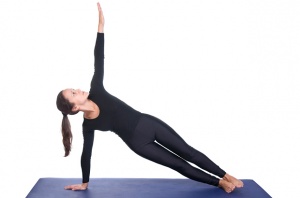
Inside Yoga 317 (16/4/2021)
Have you ever wondered what to look at when practising yoga asanas (exercises)? Have you noticed when practising even if our body is in position and keeping still, our eyes are not, wandering aimlessly around the room? The solution to this is called “drishti”.
Drishti is the Sanskrit word which is translated as a point of gaze or focus. Every asana (posture) in yoga has a designated drishti. This can be a part of our body, like the hand or foot, or the ground or the ceiling (sky), wherever it might be we hold our gaze upon this. Drishti refers not only to what we see with our eyes but also our internal eye, during practice we keep our mind’s eye on our body and breathing.
Drishti is described as a gaze because it is not an intense look, which would not be very relaxing, but a gaze that is sufficient to keep our eyes fixed on a point, but soft enough so that it is not something that is distracting or unsettling.
With our gaze fixed there is less opportunity for our mind to become distracted, because otherwise a wandering eye with always find a distraction, and this is the key to the practice: we aim to minimise activity, quieten the mind, settle the body, and remain focussed.
In many ways, asana practice teaches us to concentrate, and through this focus we achieve our goal of a greater union of body, mind and soul. The practice of drishti helps us achieve this.
Some people might regard yoga practice as a period of relaxation, where we simply relax and let our mind drift like floating on an ocean’s current, aimlessly and without control. Day dreaming is not yoga practice.
During yoga practice we are training our body and mind to pay attention and do what we ask of it: it is not a passive activity, even if it looks like it is from the outside, with all the stillness and apparently doing nothing. Stripping away distractions takes effort and hard work, and the benefits of attaining greater clarity, feeling more balanced, relaxed, energised, and so forth, as the benefits are long, but they are the product of practice, not the practice in itself.
Drishti is part of the process. And if we do not know what the correct drishti might be, it is logical, because we simply keep our gaze upon what appears to be the most logical point. And when in a flowing sequence, the eyes follow the movement, for example, from forward bend to standing with arms raised, we look at feet when in forward bend, and then as we stand up arms swinging upward we follow the movement ending with the eyes looking at the hands above our head, and then as we exhale and drop arms by our side, in tadasana, we gaze at floor (not too near nor not too far away). Thereby always maintain our drishti and our focus.
When we do catch ourselves distracted and eyes roaming or simply staring into the stars, we return to the drishti, in the same way that we practice meditation when our thoughts take us away, we keep returning to the exercise.
Keep coming back. Never judge, remain calm and still.
Any questions or comments contact me via the blog reply panel below or email gary@yogabristol.co.uk
